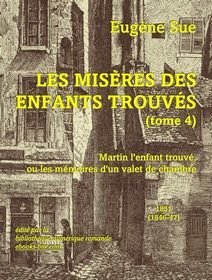Charrière Isabelle de – Letters found in emigrant portfolios
$4.99
Charrière Isabelle de – Letters found in emigrant portfolios: Letters found in the portfolios of emigrants includes twenty-eight fictitious letters dated from April 19 to July 16, 1793. Madame de Charrière composes her work between May and July 1793 She writes so hot, in direct contact with the news. But this one is particularly worrying: in January 1793, Louis XVI is guillotined; from March, the Republic, at war with the First Coalition, is threatened from the inside by a brutal Vendean chouannerie; in April, the Convention establishes the Committee of Public Safety; France, little by little, is moving towards the Terror. The plot is close to the worrying reality. Germaine, a young noble emigrated to England, loves Alphonse, a gentleman who fled to Neuchâtel in the company of an abbot, his former guardian. Germaine’s father, the Marquis de ***, who joined Conde’s army in Mannheim, opposed their union, because Alphonse refused to bear arms against his country. For her part, Pauline, Germaine’s half-sister, lives with her mother and grandfather in the Vendée, in the paternal castle, in the very heart of the royalist insurrection. She fell in love with Laurent Fontbrune, a republican officer and best friend of Alphonse, who, all Jacobin that he is, saved the castle from the rampage of the sans-culottes.
These amorous events are a pretext for burning reflections on the social and political future of France, on the equality of men and women and on the right to happiness. Will young heroes, more flexible than their elders, overcome class prejudices and ideological and military conflicts that hinder their love? The author does not tell us, because taken aback by history, she abruptly interrupts her novel July 16, 1793, without concluding …
Brillante épistolière and a woman of letters of French expression, famous for the classical elegance of her style, Madame de Charrière born Isabelle Van Tuyll, in Zuylen, near Utrecht, in 1740 – comes from an old Dutch aristocratic family of republican tendency. As a child, she learned French from a Geneva governess who passed on her passion for the authors of the Great Century. The young Isabelle shows so much affinity for the language of Molière that she makes it her main tool of expression. Growing up, Belle Van Zuylen, as she is known then, is not a shy girl to marry. If the suitors are not lacking, they are rarely suited to her, or she is the one who intimidates them with her extraordinary intelligence. At thirty years old, weary of war, she marries a Vaudois, Monsieur de Charrière, an intelligent but effaced man, who takes him to Colombier, not far from Neuchâtel.
Retired in the countryside, Madame de Charrière remains a fine observer of the debates of her time and maintains a wide correspondence in the four corners of Europe. His literary career began only late, however. Between 1784-1785 appear three novels (Letters neuchâteloises, Letters of Mistress Henley and Written Letters of Lausanne), in which she denounces the vicissitudes of the feminine condition. In 1786-1787, during a one-year stay in Paris to complete Caliste (1787), her fourth novel, she attended various salons, met Benjamin Constant, with whom she became intimately friends, and assisted the first pre-revolutionary uprisings. This experience will be crucial. Returning to Colombier, she puts her pen at the service of new ideas and publishes a series of committed texts, among which Observations et conjectures politiques (1787), six letters from a French bishop to the nation (1789) and three stories in which she does not hesitate to lecture to Louis XVI and Marie Antoinette. The massacre of the Swiss Guard on August 10, 1792 marked an important ideological turning point. Republican moderate, it condemns the bloody violence perpetrated in the name of the people and freedom. Learning that Jacobin riots were foment not far from Colombier, she published a pamphlet (Letters found in the snow) that managed to calm the game. With this success, she immediately began his letters found in portfolios of emigrants, an epistolary novel inspired by the influx of French aristocrats who sought refuge in the Prussian principality of Neuchâtel.
[Sources: Isabelle and Jean-Louis Vissière, Isabelle de Charriere, a revolutionary aristocrat (women 1988); Colette Piau-Gillot, “Preface”, Letters found in portfolios of emigrants, 1793 (women’s side 1993); Raymond Trousson, Isabelle de Charrière, a woman’s destiny in the 18th century (Hachette 1994).]










Reviews
There are no reviews yet.